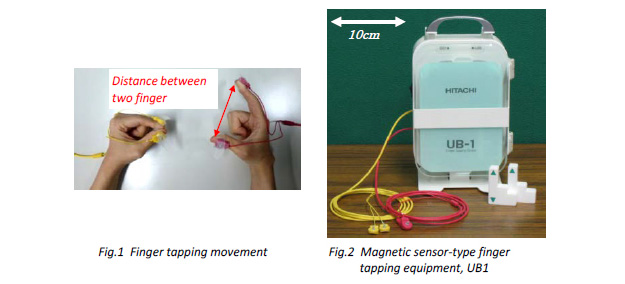May 19, 2016
Successful extraction of Alzheimer's-type dementia finger-tapping patterns
The National Center for Geriatrics and Gerontology (NCGG) in Japan has succeeded in identifying an index finger-thumb tapping pattern unique to Alzheimer's-type dementia through clinical research focusing on the rhythmical movement of both hands. This result was achieved using a waveform analysis technique for finger-tapping movement developed by Hitachi, Ltd. which allows a variety of tapping patterns to be extracted from the measurement data on motor ability using the magnetic sensors, such as the discrepancy in contact time between the fingers. This achievement opens the way to advancing tests for the early detection of Alzheimer's-type dementia.
NCGG and Hitachi began clinical research in 2013 to validate the effectiveness of measuring thumb and index-finger movement of both hands for the early detection of Alzheimer's-type dementia drawing on the knowledge that the coordination between the right and left hemisphere of the brain in response to noise becomes slower in patients with severe dementia. Specifically, NCGG conducted measurement using UB1, a magnetic sensor-type finger-tapping equipment developed by Hitachi in 2010, and analyzed the results using the waveform analysis technique also developed by Hitachi. NCGG was able to successfully extract an index finger-thumb tapping pattern unique to Alzheimer's-type dementia, and assessed the characteristics of the finger-tapping movement with high accuracy.
